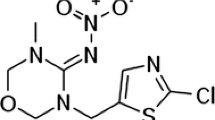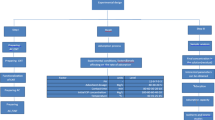Abstract
The aim of this work is to study the possibility of removing antimicrobial peptides arenicin-1 and tachyplesin-1 from aqueous solutions using new highly hydrophobic nanomaterials—carbon nanotubes (CNTs) Taunit-M. Two types of CNTs, respectively, functionalized and nonfunctionalized with–COOH groups are studied. The RP HPLC method is used for the quantification of peptides in solutions before and after the sorption on the CNTs. It is revealed that tachyplesin-1 and arenicin-1 are actually not adsorbed on nonfunctionalized CNTs. A theoretical calculation of specific hydrophobicity and aliphatic index shows that both peptides have poorly expressed hydrophobic properties, and this can explain lack of their adsorption. On the contrary, using functionalized CNTs makes it possible to remove up to 89% of arenicin-1 and 92% of tachyplesin-1 from the solution. A comparative study of adsorption of the antimicrobial peptide tachyplesin- 1 on nonfunctionalized activated carbons and functionalized CNTs shows that the amount of peptide adsorbed on activated carbons is about three times less than that absorbed on CNTs. It is assumed that the high adsorption capacity of the functionalized CNTs toward the studied peptides results from the functionalization of the sorbent surface with the–COOH groups capable of forming ionic bonds with free–NH2 groups of peptides. This shows the prospects for using functionalized CNTs as sorbents for the removal of toxic preparations of peptide origin from aqueous solutions.
Similar content being viewed by others
References
A. D. McEachran, J. Blackwell, R. Brett, D. Hanson, K. J. Wooten, G. D. Mayer, S. B. Cox, and P. N. Smith, “Antibiotics, bacteria, and antibiotic resistance henes: aerial transport from cattle feed yards via particulate matter,” Environ. Health Perspect. 123, 337–343 (2015).
P. V. Panteleev, I. A. Belousov, S. V. Balandin, and T. W. Ovchinnikov, “Structure and biological functions of β-hairpin antimicrobial peptides,” Acta Natur. 7 (1), 37–47 (2015).
M. B. Ahmed, J. L. Zhou, H. H. Ngo, and W. Guo, “Adsorptive removal of antibiotics from water and wastewater: progress and challenges,” Sci. Total Environ. 532, 112–126 (2015).
Y. Fei, L. Yong, H. Shen, and M. Jie, “Adsorptive removal of antibiotics from aqueous solution using carbon materials,” Chemosphere 153, 365–385 (2016).
M. V. Il’ina, A. V. Timofeeva, V. T. Ivanova, E. I. Burtseva, L. A. Baratova, I. Yu. Sapurina, and G. S. Katrukha, “Study of the processes of sorption and desorption of some antibiotic polypeptides on multilayer carbon nanotubes of ‘Taunit’ type,” Biotekhnol., No. 5, 59–65 (2011).
A. G. Tkachev, A. V. Melezhik, T. P. D’yachkova, A. N. Blokhin, E. A. Burakova, and T. V. Pas’ko, “Taunit carbon nanomaterials: production and use,” Izv. Vyssh. Uchebn. Zaved., Ser.: Khim. Khim. Tekhnol. 56 (4), 55–59 (2013).
www.nanotoc.all.biz.
T. P. D’yachkova and A. G. Tkachev, Methods of Functionalization and Modification of Carbon Nanotube (Spektr, Moscow, 2013) [in Russian].
Advances in the Characterization of Industrial Minerals, Ed. G. E. Christidis (Eur. Mineralog. and the Mineralogical Society of Great Britain and Ireland, London, 2011), Vol. 9.
Activated Carbon, Technical Information Bulletin. Sigma-Aldrich. www.sigmaaldrich.com.
R. Consden, A. Gordon, A. Martin, and R. Synge, “Gramicidin S: the sequence of the amino-acid residues,” Biochem. J. 41, 596–602 (1947).
Physicochemical Analysis Methods, Practical Guide, Ed. by V. B. Aleskovskii (Khimiya, Moscow, 1988) [in Russian].
A. J. Ikai, “Thermostability and aliphatic index of globular proteins,” J. Biochem. 88, 1895–1898 (1980).
J. Kyte and R. F. Doolittle, “A simple method for displaying the hydropathic character of a protein,” J. Mol. Biol. 157, 105–132 (1982).
E. Gasteiger, C. Hoogland, A. Gattiker, S. Duvaud, M. R. Wilkins, R. D. Appel, and A. Bairoch, “Protein identification and analysis tools on the ExPASy server,” in The Proteomics Protocols Handbook, Ed. by J. M. Walker (Humana, Totowa, NJ, 2005), pp. 571–607.
M. G. Bansal and M. Goyal, Activated Carbon Adsorption (CRC, Taylor and Francis Group, Boca Raton, FL, 2005). www.taylorandfrancis.com.
Author information
Authors and Affiliations
Corresponding author
Additional information
Original Russian Text © A.V. Timofeeva, A.L. Ksenofontov, O.A. Koksharova, 2018, published in Rossiiskie Nanotekhnologii, 2018, Vol. 13, Nos. 7–8.
Rights and permissions
About this article
Cite this article
Timofeeva, A.V., Ksenofontov, A.L. & Koksharova, O.A. Removal of Antimicrobial Peptides from Aqueous Solutions Using Carbon Nanotubes. Nanotechnol Russia 13, 443–447 (2018). https://doi.org/10.1134/S1995078018040158
Received:
Accepted:
Published:
Issue Date:
DOI: https://doi.org/10.1134/S1995078018040158




